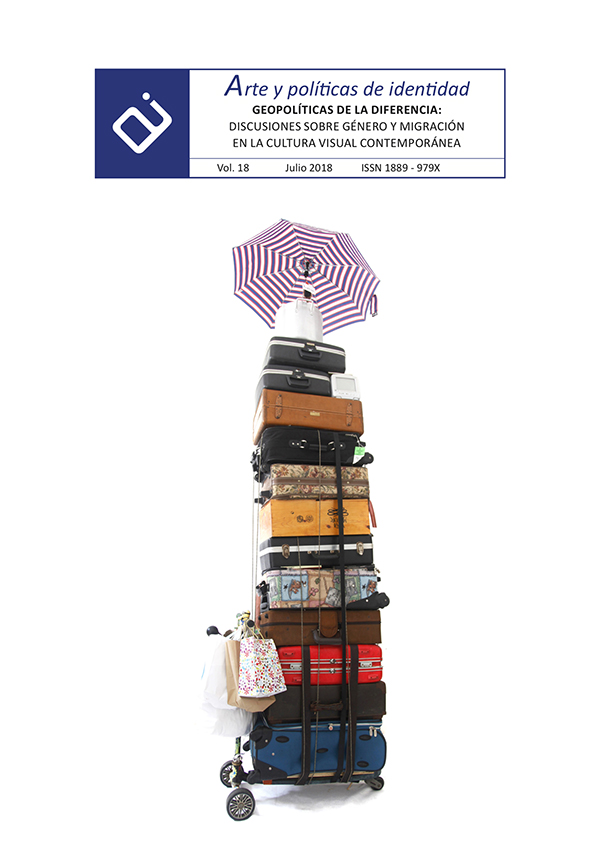Duchamp’s Ready-Made Renovates but not Innovate
The Fontaine Urinal as Make-Ready Phantasmagoria
Abstract
The author analyzes the traumatic effect of the idea of shock with which Walter Benjamin described modern life and, through the review of Buck-Mors on this sensory perspective, makes the following interpellation: if the modern technological world forms an anaesthetic system To avoid perceptual shock, how can there be a sufficiently traumatic sign-object to be considered avant-garde? The article states that the only artistic object that can deride this anaesthetic name is that which is isolated from any semantic relationship with anything else in its own manual process of realization. An object lacking approximation allusive to another form. A rhetorical option that does not allow the transfer of a style of the subject. The iconic representation totally impartial. The form that cannot exist as a representation. The text argues that the perfect duplication of the ready-made Fontaine could be and concludes that Duchamp renews but does not innovate, because the urinal remains as a make-ready phantasmagoria.
Downloads
-
Abstract825
-
PDF (Español (España))686
References
Alexandrian, S. (1976). Marcel Duchamp. Paris: Flammarion.
Alamansi, G. (1977). La estética de lo obsceno. Madrid: Akal.Argullol, Rafael y Trías, Eugenio (1992). El cansancio de occidente. Una conversación. Barcelona: Destino.
Azúa, F. de (1995). Diccionario de las artes. Diccionario de autor. Barcelona: Planeta.
Ball, E. y Knafo, R. (1988). The R. Mutt dossier. Art Forum, 27(2), 114.Baudelaire, C. (1983). Mi corazón al desnudo y otros papeles íntimos. Madrid: Visor.
Benjamin, W. (1974). Gesammelte Schriften. Frankfurt: Suhrkamp.
Benjamin, W. (1979). Charles Baudelaire. Un poète lyrique à l’apogée du capitalisme. París: Payot.
Brea, J. L. (1997). Algunos pensamientos sueltos acerca de arte y técnica. Zehar. 33, 8-15. Recuperado de http://artxibo.arteleku.net/sites/all/libraries/pdfjs/web/viewer.html?file=http%3A//artxibo.arteleku.net/es/islandora/object/arteleku%253A3557/datastream/OBJ/view
Breton, A. (1969). Les pas perdus. Paris: Gallimard.
Buck-Morss, S. (1993). Estética y anestésica: una revisión del ensayo de Walter Benjamin sobre la obra de arte. La Balsa de la Medusa, 25. 55-96.
Bürger, P. (1987). Teoría de la vanguardia. Barcelona: Península.
Cabanne, P. (1984). Conversaciones con Marcel Duchamp. 2ª ed. Barcelona: Anagrama.
Calvesi, Maurizio (1977). La tradizione esoterica in Duchamp e nel surrealismo. En: Studi sul surrealismo. Roma: Officina Edizioni.
Camfield, W. (1989). Marcel Duchamp. Fountain. Houston: Houston Fine Art Press.
Castoldi, A. (1997). El texto drogado. Madrid: Anaya-Mario Muchnick.
Castro Flórez, F. (1992). Elogio de la pereza. Notas para una estética del cansancio. Madrid: Julio Ollero Editor.
Clausewitz, C. von (1966). Vom Kriege. 7ª ed. Barcelona: Labor.Dorsch, F. (1991). Diccionario de psicología. Barcelona: Herder.
Duve, T. de (1983). Who ́s afraid of red yellow and blue?. Artforum. 22(1), 30.
Duchamp, M. (1976). Duchamp du signe. Escrits. Paris: Flammarion.Fortuny, J. (1994). Els mercenaris de l ́art d ́avantguarda confonen originalitat per ocurrència. Papers d ́Art, 61, 12.
González, J. A. (1990). El exotismo de las vanguardias artístico-literarias. Barcelona: Antropos.
Groys, B. (1992). Über das Neue. Versuch einer Kulturökonomie. München: Carl Hauser Verlag.
Kuspit, D. (1993). The cult of the avant-garde artist. Cambridge: Cambridge University Press.Lyotard, J. F. (1977). Les transformateurs Duchamp. París: Galiléé.
McEvilley, T. (1988). Empyrhical thinking (and why kant can ́t). Art Forum, (27)2, 20.
Messenger, J. V. (1977). Marcel Duchamp. Alchemical symbolism in and relationships between the large glass and the étant donnés. California: California State University of Fine Arts.
Paz, O. (1989). La apariencia desnuda. La obra de Marcel Duchamp. Madrid: Alianza Editorial.
Ramírez, J. A. (1993). Duchamp. El amor y la muerte incluso. Madrid: Siruela.
Sanguineti, E. (1965). Vanguardia, ideología y lenguaje. Ensayos. Caracas: Monte Ávila Editores.
Tatarkiewicz, W. (1990). Historia de seis ideas. Madrid: Tecnos.
Taylor, B. (1980). Duchamp ́s art legacy. Art and Artists,2, 21.Trías, E. (1991). Lógica del límite. Barcelona: Destino.
Trimarco, A. (1991). Confluencias. Arte y crítica en la posmodernidad. Madrid: Julio Otero Editor e Instituto de estética y Teoría de las artes.
Van Lier, H. (1971). Objeto y estética. En: Abraham Moles y col. Los objetos. Buenos Aires: Tiempo Contemporáneo.
Vattimo, G. (1985). Hermenéutica y antropología. Cuadernos de crítica e investigación, 1, 15.
Virilo, P. (1988). Estética de la desaparición. Barcelona: Anagrama.
Works published in this journal are subject to the following terms:
- The Service of Publications from the University of Murcia (publishing house) keeps the published works’ copyrights, and favors and allows the reuse of these works under the license indicated in point 2.
- Works are published in the journal’s online edition under the license Creative Commons Reconocimiento-NoComercial-SinObraDerivada 3.0 España(texto legal). They can be copied, used, disseminated, transmitted and publicly exhibited, as long as: i) the author and original source of publication are cited (journal, publishing house and work’s URL); ii) they are not used for commercial purposes; iii) the existence and specifications of this license are mentioned.
3. Conditions for auto-file. It is allowed and encouraged that authors share electronically their pre-print version (the pre-reviewed version) and /or post-print version (the reviewed and accepted version) of their Works before the publication, since it promotes its circulation and dissemination. RoMEO color: green.










